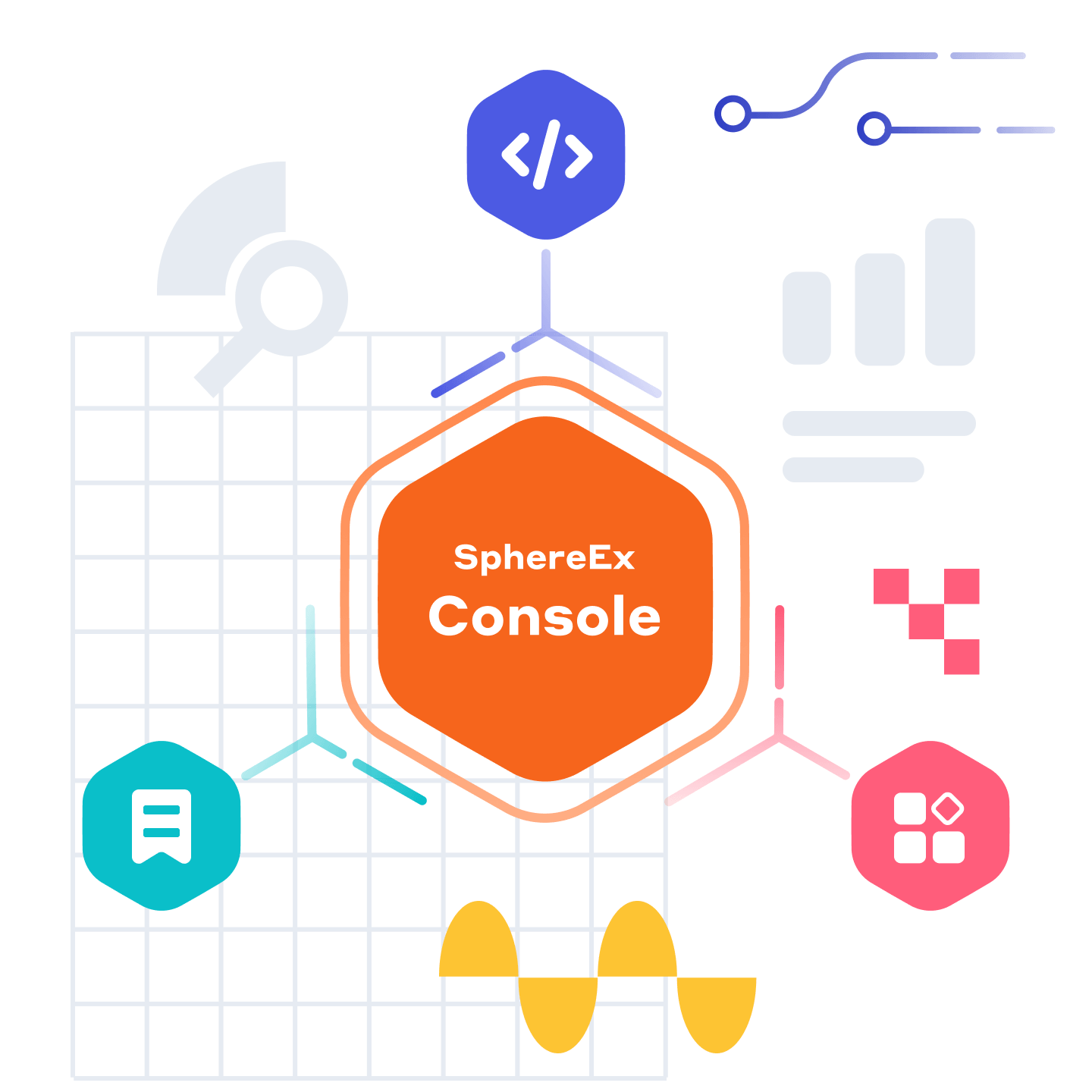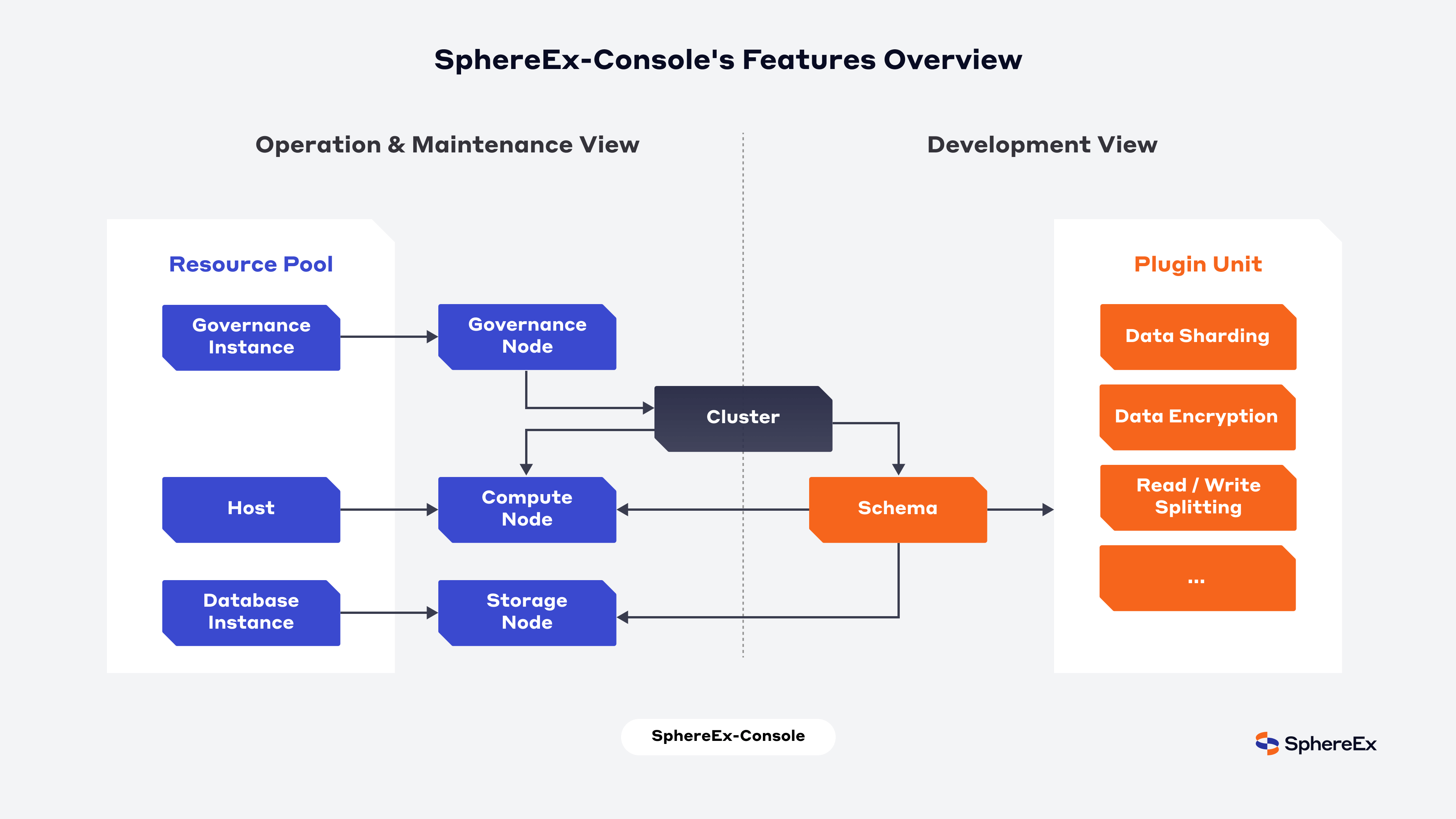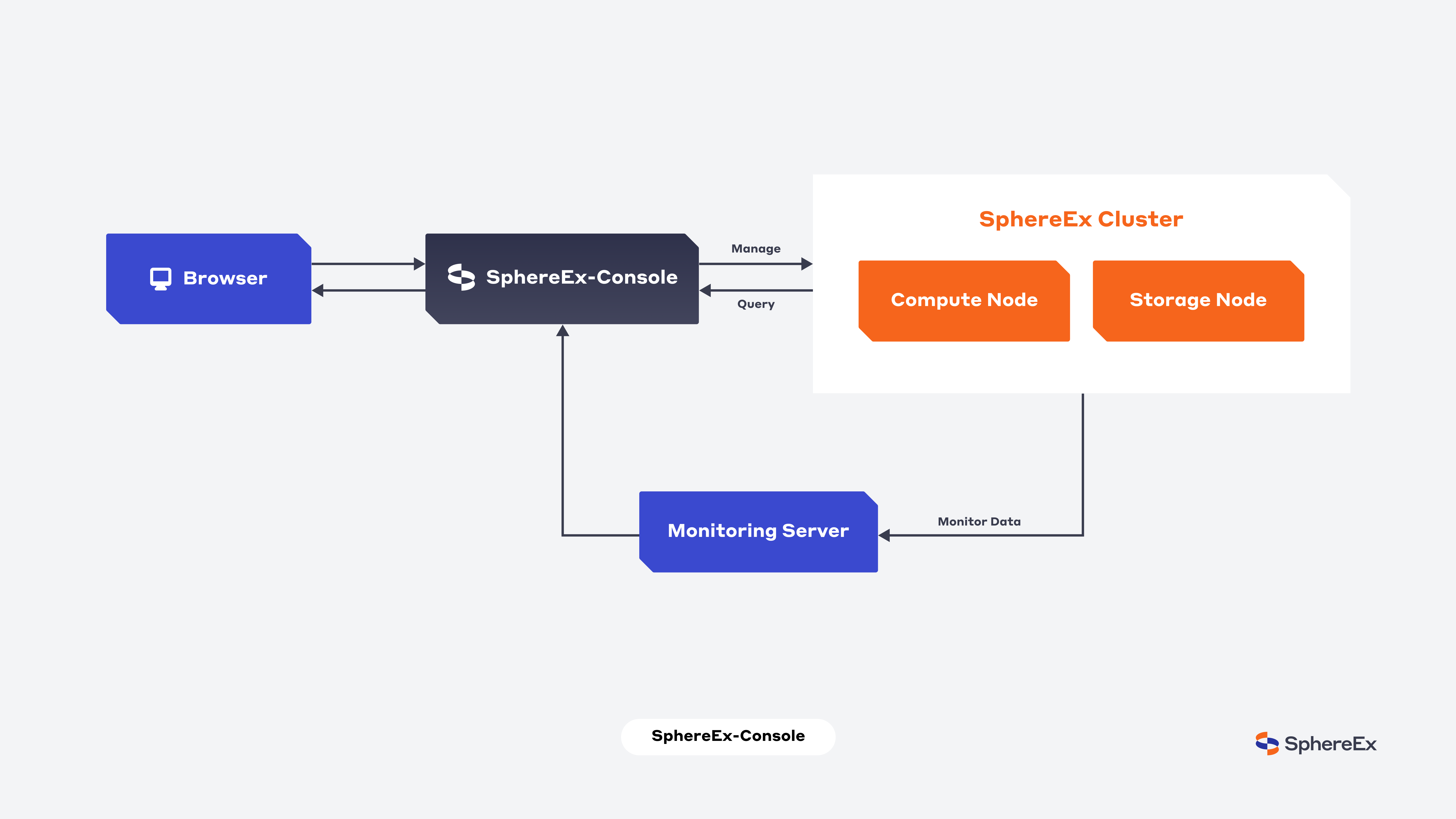Introduction
What is SphereEx-Console?

Introduction
What is SphereEx-Console?
The SphereEx Enterprise Data Service Platform was created by leveraging ShardingSphere’s open source kernel, and enhancing it with enterprise grade features. It provides enhanced data service capabilities, such as data sharding, data security etc.
SphereEx-Console is a powerful dashboard applied to the management and control of the SphereEx Enterprise Data Service Platform. It provides a one-stop solution with ShardingSphere at its core and a user-friendly experience packaging resources, instances and plugins.

Components
Host
Deploys and installs actual physical resources such as physical machine, virtual machine, container, etc.
Cluster
A distributed cluster composed of multiple compute nodes and storage nodes, which is the unit of user management.
Database Instance
Physically corresponding to the database instance, there may be multiple database instances on one host.
Logical Database
A logical database corresponds to a schema in DB Plus Engine, and is managed at the cluster level. A cluster can have multiple logical databases with different names.
Compute Node
A computing node, corresponding to the DB Plus Engine deployment unit, is a group of resources determined by IP and port. A single computing node is responsible for SQL routing, data consolidation, data aggregation and other functions. One DB Plus Engine instance corresponds to multiple computing nodes.
Plugin
DB Plus Engine is designed with a plugin oriented architecture. Functions are provided in the form of plugins, including but not limited to data sharding, read/write splitting, etc.
Storage Node
Corresponding to a database under a database instance, DB Plus Engine is responsible for data storage. Physically corresponds to a schema under a database instance, that is, a set of object resource collections under IP, port, username, password and schema conventions.
DB Plus Engine
It consists of two products, DB Plus Engine-Driver and DB Plus Engine-Proxy, which can be deployed independently and support mixed deployment. They both provide standardized horizontal scaling of data, distributed transaction, distributed governance and other functions. They can be applied to various application scenarios such as Java isomorphism, heterogeneous language, cloud native and so on.
Governance Center
Store the configuration information of the computing node, and the namespace corresponds to the cluster one by one.
Architecture Overview
SphereEx-Console is based on B/S architecture, and is accessed through a web browser.

Advantages
Easy to Use
It improves the user experience and eliminates configuration errors. Users do not need to operate the SphereEx Enterprise Data Service Platform through configuration commands, greatly improving user experience and achieving "zero" platform bottlenecks.
Comprehensive
Evolving the management capabilities of the open source version, it provides a unified solution for the management and control of the SphereEx Enterprise Data Service Platform from basic resources to plugin capabilities.
Visual Monitoring
With its data visualization & management dashboard, SphereEx Enterprise Data Service Platform’s clusters, instances and hosts monitoring data are visible online and in real time.
Functions
| Level 1 Module | Level 2 Module | Description |
|---|---|---|
| Resource | Host | Manage physical hosts |
| Database Instance | Manage database instances | |
| Governance Center Instance | Manage governance center. | |
| Cluster | Cluster | Manage clusters, governance centers and parameters. |
| Compute Node | Register and manage compute nodes | |
| Storage Node | Register and manage storage nodes | |
| Schema | Create and manage logical databases | |
| Plugin | Data Sharding | Manage data sharding and table group. |
| Monitoring | Host | Display host monitoring information |
| Compute Node | Display the monitoring information of the compute node |
Scenarios
SphereEx-Console is used for the operation & maintenance of the SphereEx Enterprise Data Service Platform. It supports operation scenarios for maintainers and developers in the Internet, finance and government fields.